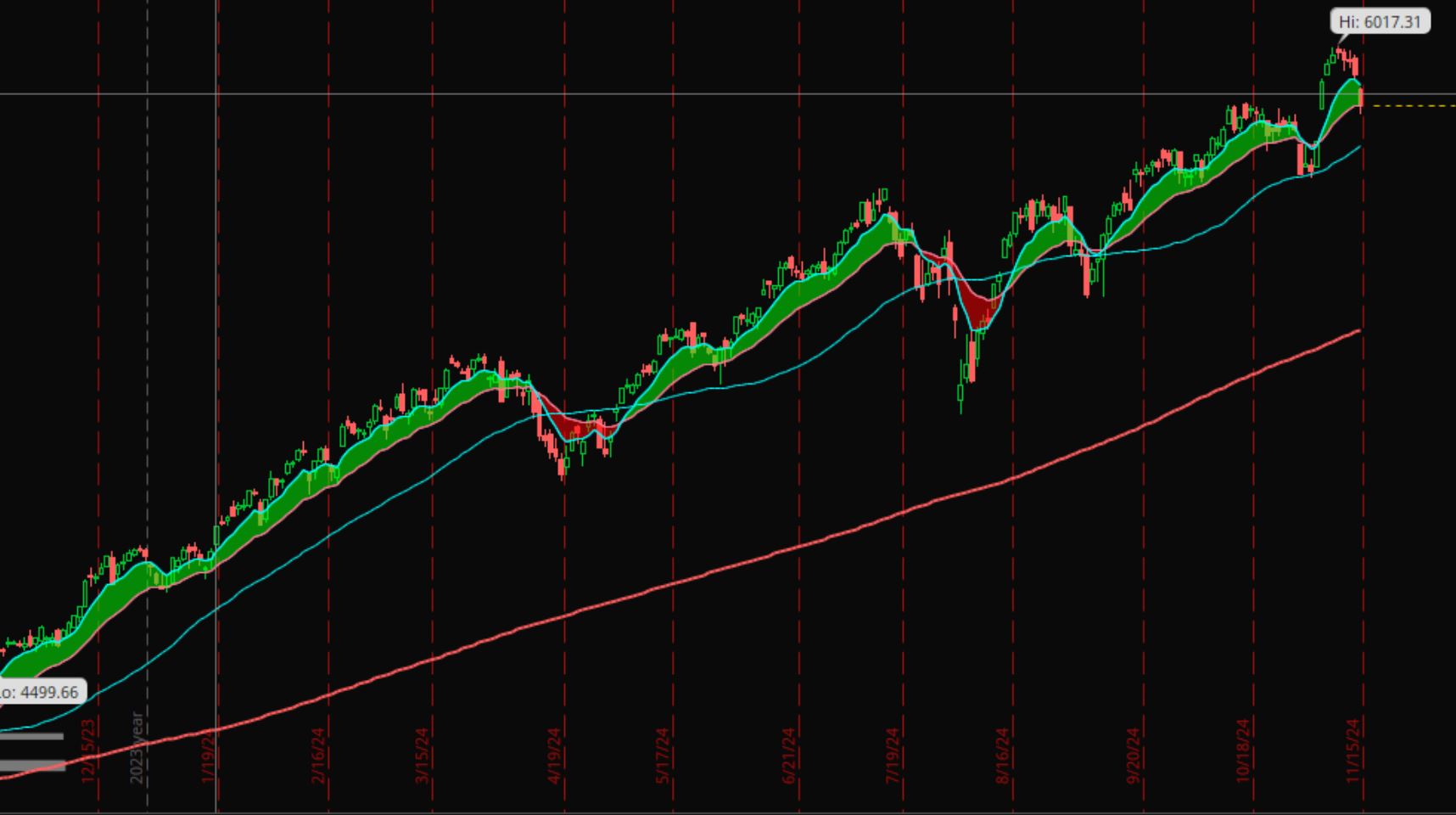Market downturns are a natural part of investing, but they don’t have to derail your financial goals. By adopting the right mindset and strategies, you can navigate these periods with confidence and even turn them into opportunities for long-term growth. Here’s how to stay calm and profitable during a market downturn:
1) Embrace Drawdowns as Part of Investing
No matter how experienced you are, temporary declines in your portfolio are unavoidable. Even legendary investors like Peter Lynch, who delivered an impressive +604% return over his 13-year career, endured drawdowns of 27% to 56%. Think of it like flying—no matter how skilled the pilot, turbulence is inevitable.
Accepting that market declines are a natural part of the investing journey helps you stay calm and focused. Recognizing you have no control over when they happen allows you to avoid emotional decision-making.
2) Market Prices Don’t Always Reflect True Value
The stock market can be irrational in the short term. Factors like market manipulation, high-frequency trading, forced selling, and panic selling can drive prices down, even for high-quality businesses. For instance, during a selloff, a company like Alphabet (GOOGL) might see its stock drop 20-30%, even though its fundamentals remain unchanged.
Intelligent investors focus on the intrinsic value of a business, not the temporary mispricing of its stock. If the market sells off high-quality businesses at a discount, you haven’t lost anything—unless you panic and sell with the crowd.
3) Shift Focus to Long-Term Growth
Instead of obsessing over short-term fluctuations, shift your focus to where your portfolio could be in 5 to 10 years. With investments in high-quality businesses, your portfolio could double in 3 to 5 years (assuming 15%-24% annualized returns) and grow 4X to 9X over a decade.
When you focus on the destination, short-term turbulence becomes less concerning. In fact, downturns can provide opportunities to buy more shares at discounted prices. Like a skilled pilot who knows the destination is clear, you can remain confident despite temporary market turbulence.
4) Choose Your Words Carefully
The language you use influences your thoughts and emotions. Avoid negative phrases like “bloodbath,” “I lost $XXX,” or “portfolio is bleeding.” These reinforce the idea of permanent loss and amplify negative emotions.
Instead, use neutral or constructive language that reflects the temporary nature of market downturns. For example:
- Instead of “I lost money,” say “My portfolio is experiencing short-term fluctuations.”
- Instead of “The market is crashing,” say “The market is going through a correction.”
- Instead of “My stocks are bleeding,” say “There are buying opportunities in high-quality businesses.”
Framing your thoughts rationally helps you stay composed and make better investment decisions.
5) Don’t Fall into the ‘I Should Have Sold’ Trap
It’s impossible to consistently predict short-term market movements. Dwelling on thoughts like, “I should have sold before the drop” is unproductive and can lead to panic selling. This behavior prevents you from benefiting from long-term growth.
Instead, focus on what you can control: your long-term strategy and the quality of your investments.
6) Use Downturns to Accumulate More Shares
Market corrections provide opportunities to buy shares of high-quality businesses at lower prices. Since it’s impossible to predict how long a correction will last or pinpoint the exact bottom, consider buying in small tranches to average into your position.
If your portfolio is already fully allocated and you have no cash to deploy, ignore temporary price fluctuations. Distract yourself with activities like watching a movie, working around the house, going fishing, or taking a walk. In a few weeks or months, the downturn will likely be just a distant memory.
7) Learn from History: Market Recoveries are Inevitable
History shows that the market has always recovered from major downturns. The S&P 500, for instance, has bounced back from every crash—be it the Great Depression, the 2008 financial crisis, or the 2020 COVID-19 selloff. Understanding this long-term trend can give you confidence that downturns are temporary.
8) Diversify Your Portfolio
Diversification is essential to reduce risk during downturns. By spreading investments across various asset classes, sectors, and geographies, you minimize the impact of a decline in any single investment. For example, if the tech sector suffers, a well-diversified portfolio with exposure to healthcare, consumer staples, or real estate can help cushion the blow.
Actionable Tip: Regularly review your portfolio to ensure it’s diversified. Consider adding ETFs that track broad market indices for balanced exposure.
9) Rebalance Your Portfolio
Market downturns can disrupt your asset allocation, causing your portfolio to become riskier or more conservative than intended. Rebalancing involves adjusting your portfolio back to its target allocation by selling overperforming assets and buying underperforming ones.
Actionable Tip: Rebalance periodically—annually or semi-annually—or when your allocation deviates significantly. This disciplined approach helps you buy low and sell high, even during volatile periods.
10) Control Your Information Intake
Constantly checking your portfolio or reading alarming news headlines can heighten stress and lead to impulsive decisions. Instead, limit how often you check prices and focus on fundamental updates about the businesses you own. This will help you stay grounded in facts, not emotions.
11) Separate Price from Value Emotionally
Your portfolio balance is not a measure of success. A temporary price drop doesn’t mean you made a bad investment. Shift your focus from short-term price movements to the underlying performance of the businesses you own. This perspective will help you stay committed to your long-term strategy.
12) Avoid the Herd Mentality
When markets fall, panic spreads quickly. Just because others are selling doesn’t mean you should. Many successful investors, like Warren Buffett, have built their wealth by going against the crowd—buying when others panic and holding when fear dominates. Stick to your strategy and avoid being swayed by the herd.
13) Visualize Your Long-Term Goals
Remind yourself why you’re investing. Whether it’s for financial independence, retirement, or building generational wealth, keeping your long-term goals in mind will help you resist emotional reactions during downturns. Visualizing your future success can provide the motivation to stay the course.
Final Thoughts
Market downturns are a part of investing, but they don’t have to be stressful. By adopting a long-term perspective, focusing on business fundamentals, and making strategic decisions, you can turn market declines into opportunities for future gains. Stay calm, stay invested, and let time and compounding work in your favor. The most successful investors are those who remain disciplined and patient, even when the market feels uncertain.












Leave a Reply